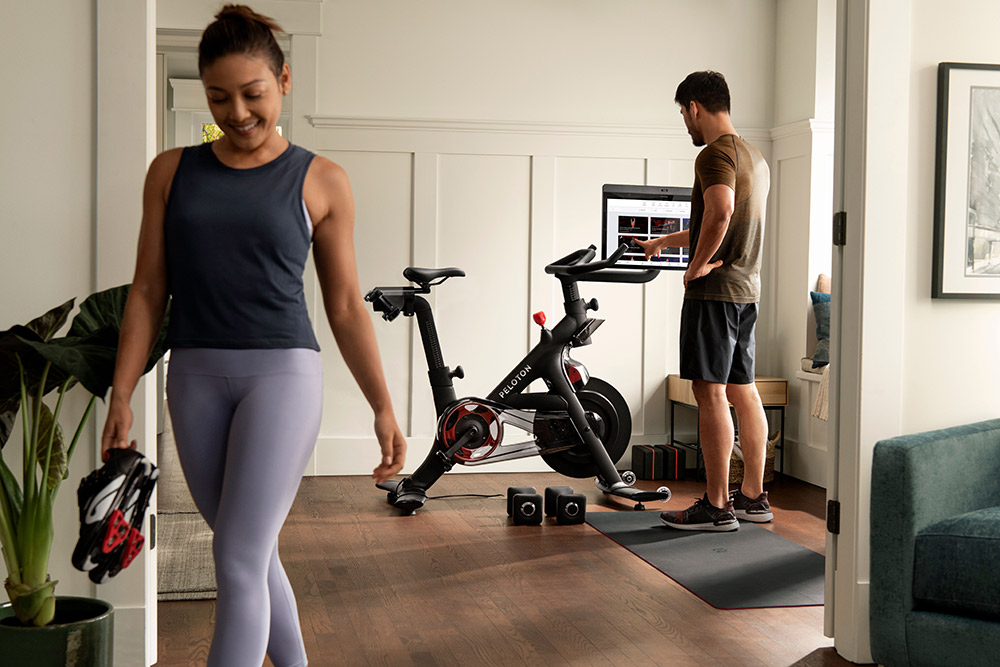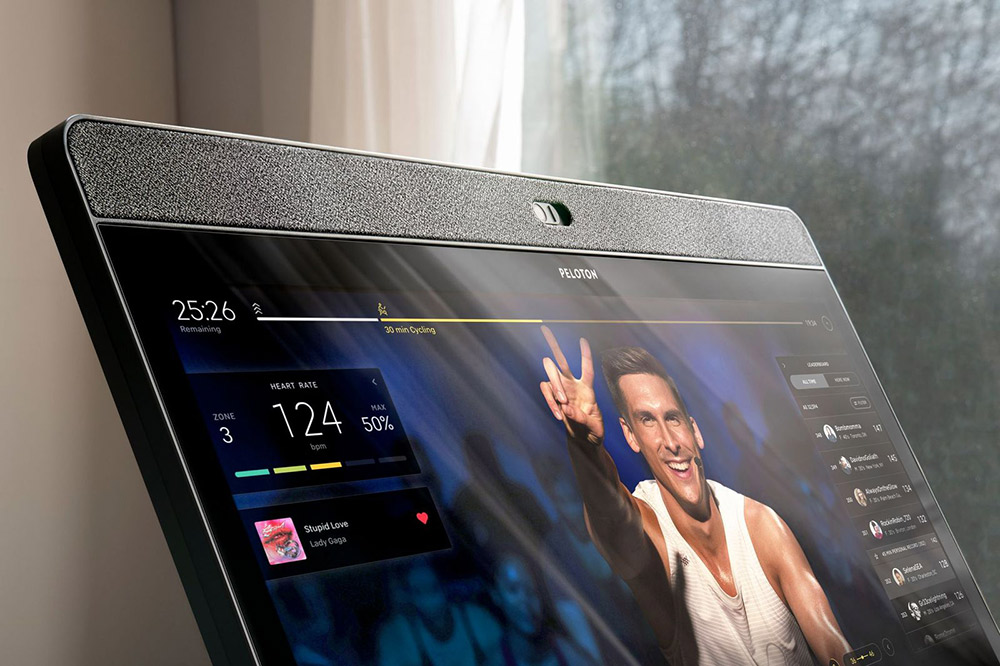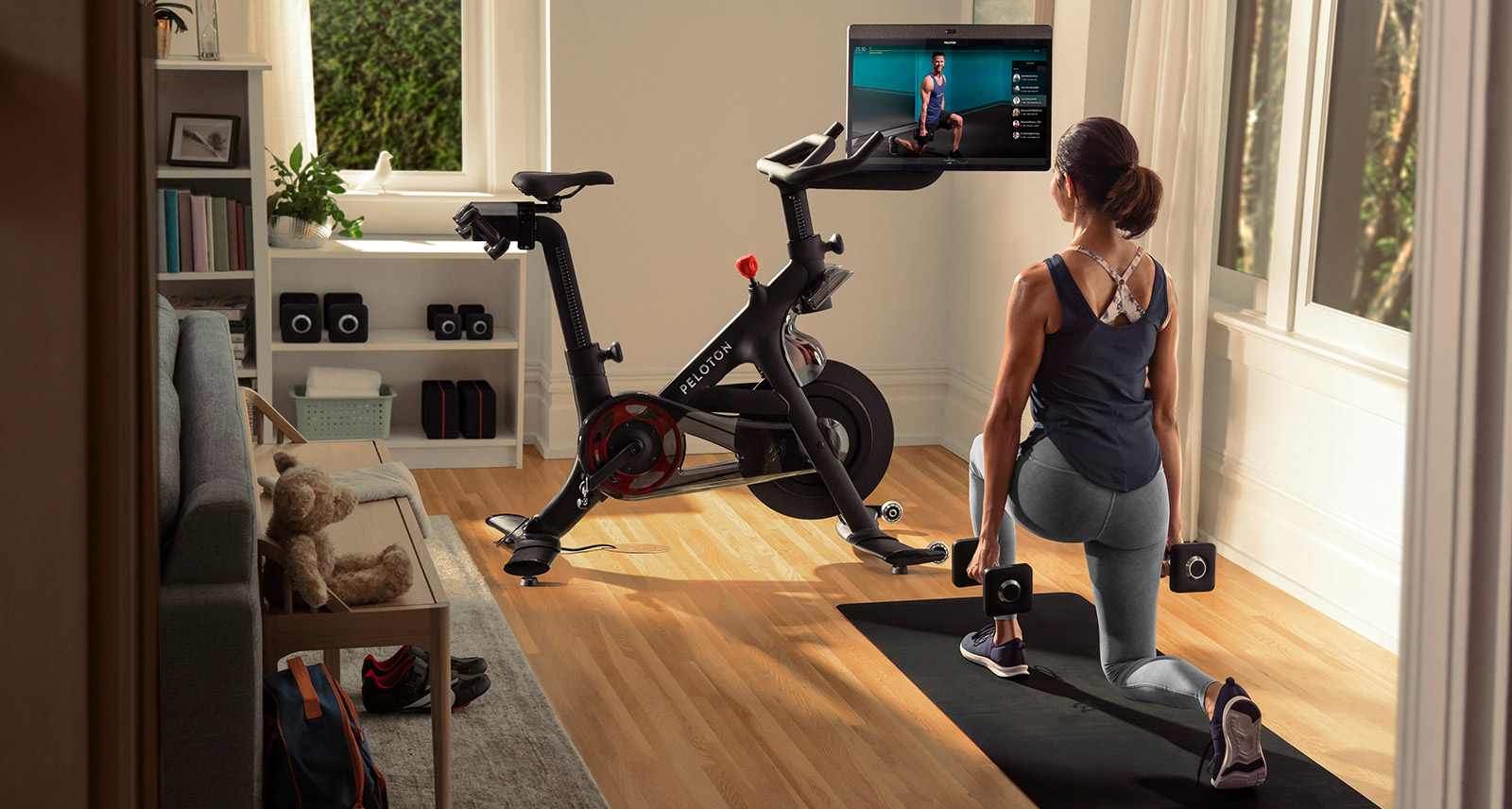Here’s What the Peloton Bike+ Is Really Like
My Peloton Bike+ arrived one bright early Saturday afternoon in late August. It was smaller than I’d expected: slim and compact, with tight, swooping curves, like a modernist sculpture. The deliverymen sat the bike down in the corner that I’d cleared in my 600-foot condo. The bike looked good, or in the very least, it looked expensive. The rotating high-definition screen chirped to life, and the deliverymen showed me how to set up an account and navigate the user interface. Before they left, they stepped back to admire it. “You’re the first person in Canada to get one of these,” one told me. But they’d been setting up the old bikes — the ones without the plus symbol attached to their names — across Toronto every single day since the start of the pandemic.
Peloton is one of few companies that had a banner year in 2020. Like Amazon and Netflix, Peloton offers a service expressly designed to be enjoyed at home, which made it, of course, ideal for lockdown orders and stay-at-home mandates. When gyms all over North America suddenly shut down last March, here was a nifty, high-tech exercise bike with daily live virtual classes and a massive back catalogue of on-demand programming. It was one of those unforeseeable marketplace windfalls — right time, right place. Almost overnight, Covid-19 created a need that Peloton was uniquely positioned to fulfil.
If the Peloton Bike seemed like a good way to keep fit in lockdown, the Peloton Bike+ is even better. The Peloton Bike is, in essence, made for doing spin classes at home. But one can tire of spinning — especially if spinning is the only thing you’re able to do. The Bike+ aims to expand the Peloton repertoire. Now, you can subscribe to the monthly membership program and either sit on the bike for spin or stand beside it and do high-intensity interval training, yoga, stretching, or meditation. The HD touchscreen rotates 180 degrees to the left or right so that you can watch the classes from elsewhere in the room. Now, Peloton even sells light dumbbells and sleek yoga blocks, so that even when gyms do eventually reopen (the thinking goes), you won’t need to return.

It’s certainly tempting to think Peloton is the answer to the questions: how will I ever stay healthy during a global pandemic and will I ever feel safe exercising with other people again? At $3,295 CAD, it is hair-raisingly expensive. But so is a gym membership. And like a gym membership, what you’re really paying for with Peloton is the sense of commitment. But, beyond the pandemic, is a stationary bike with an iPad attached an adequate substitute for a gym membership? And is the Peloton Bike service really all it’s cracked up to be?
For what it’s worth, people really do seem convinced. Reviews tend toward the effusive; like Soul Cycle, fans of Peloton often take on the collective reverence of a cult. “We’ve made a ton of believers. Millions. And that’s before the pandemic,” Tom Cortese, Peloton’s COO and head of product development, told me over the phone shortly before the launch of the Bike+ this past September. “Peloton usage per person actually increases each year. That’s not something you really see in fitness trends.” That’s an interesting quirk in the business model. A brick-and-mortar gym banks on a large percentage of its members signing up in January and never coming in. It’s in their interest for you not to meet your goals. “Conversely, we employ thousands of people whose only job it is to make sure you use your Peloton more today than you did the day before,” says Cortese.
The first time I hopped on my Peloton, I booted up one of the bike’s many first-person city tours, which the company calls Scenic Rides. I chose a strip of West Sunset that I’m familiar with in real life. I was excited to take a brisk ride through Los Angeles. But that’s not how it felt. Instead, it felt like I was sitting on a loud exercise machine in my living room while I watched a shockingly low-res home movie of someone’s bike ride through Los Angeles. This was the revolutionary home fitness trend converting legions of spinning skeptics? A pair of pedals and a YouTube video set to a public-domain techno beat? Forget being transported to another part of the world. Where was any real sense of being on a bike?
What I realized is that the Scenic Rides aren’t the authentic Peloton experience — which explains why they’re buried so deep in the sub-menus, as if Peloton has begrudgingly continued to make the content available but doesn’t want to encourage anyone to use it. The true Peloton experience is the Peloton classes, which can be joined live at regular intervals throughout the day or streamed at any time. These classes have the look and feel of real-life spinning classes, with the slight but niggling distinction that instead of 20 or 30 people riding alongside you, there are tens of thousands spread out in living rooms and basements around the world. The classes range in length and difficulty, and you can sort them by instructor, style of music, or theme.
For my debut ride, I chose a class based on “The Last Dance,” the hugely popular ESPN documentary about Michael Jordan and the ’97-’98 Chicago Bulls that was released early last year. The instructor, Alex Toussaint, wore a Bulls jersey and rode at home in front of his collection of Air Jordan sneakers. “What’s up Peloton!” he roared as the class began. “This one goes out to the greatest to ever do it: Michael Jordan.” As we chugged our way through the demanding 45-minute ride, Alex encouraged us by referencing both Jordan’s win-at-all-costs attitude and highlights from his storied career. “We’re going for that sixth ring!” he shouted as we neared the ride’s climax. It was a tenuous connection, maybe, but I got the point.

The theme, the music, the instructor: all of this stuff is designed, not so secretly, to disguise the fact that riding a stationary bike is kind of boring. A 45-minute ride on the Peloton, compared to, say, a 45-minute CrossFit class at a gym, is pretty mindless and repetitive, and without a charismatic coach clamouring for your attention, it’s hard to imagine pushing yourself. It’s a testament to the intensity and charm of Peloton’s instructors that they’re able to mitigate a lot of that built-in boredom, whether by urging you to hustle, advising you to calm your mind, or joking and laughing and encouraging you to sing along to the tunes. (Toussaint is a big fan of this technique.) Peloton’s instructors have a magnetic sort of star power, and if there is one thing about the experience that unequivocally works, it’s the screen presence they so easily exude.
The Peloton Bike+ separates classes between “on bike” and “on the floor.” It’s the latter that’s meant to bridge the gap between the bike as a fitness tool and the bike as a fitness ecosystem: a whole gym conveniently packed into the corner of your room. But so far, these classes are somewhat lacking. Right off the bat, I sorted the classes by difficulty and chose the hardest high-intensity interval training (HIIT) class available. (This metric is determined by user ratings after the class is completed.) It was, well, fairly easy. After nearly an hour flying through the class’s circuit of bodyweight and dumbbell exercises, I hadn’t broken much of a sweat.
I suspect Peloton’s off-bike programming will improve as the company continues to develop this side of the business. The cycling classes, after all, have been honed to perfection, and they know how to make exercise hard. But HIIT workouts and other fitness regimes don’t seem to lend themselves as well to one-way video instruction as spin classes. When complex full-body movements are involved, it helps to be under the eye of an attentive coach. Still, Peloton is intent to make it work. “We’re not a bike company because we wanted to be a bike company, but because we wanted to figure out the formula for making the fitness experience work at home,” says Cortese. It’s not hard to imagine a future in which they perfect the full package, like they already have the bike.










